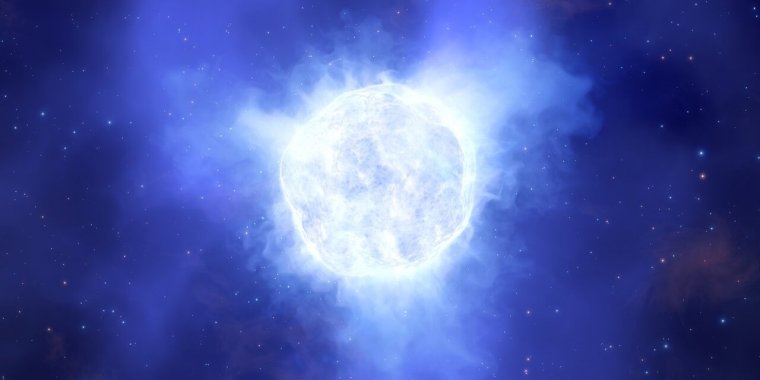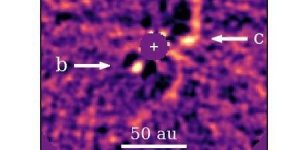| News / Space News |
ESO Telescope Captures the Disappearance of a Massive Star
Between 2001 and 2011, various teams of astronomers studied the mysterious massive star, located in the Kinman Dwarf galaxy, and their observations indicated it was in a late stage of its evolution.

Artist’s impression of the disappearing star. Photo: ESO
Allan and his collaborators in Ireland, Chile and the US wanted to find out more about how very massive stars end their lives, and the object in the Kinman Dwarf seemed like the perfect target.
But when they pointed ESO’s VLT to the distant galaxy in 2019, they could no longer find the telltale signatures of the star. “Instead, we were surprised to find out that the star had disappeared!” says Allan, who led a study of the star.
Located some 75 million light-years away in the constellation of Aquarius, the Kinman Dwarf galaxy is too far away for astronomers to see its individual stars, but they can detect the signatures of some of them.
From 2001 to 2011, the light from the galaxy consistently showed evidence that it hosted a ‘luminous blue variable’ star some 2.5 million times brighter than the Sun.
Stars of this type are unstable, showing occasional dramatic shifts in their spectra and brightness.
Even with those shifts, luminous blue variables leave specific traces scientists can identify, but they were absent from the data the team collected in 2019, leaving them to wonder what had happened to the star. “It would be highly unusual for such a massive star to disappear without producing a bright supernova explosion,” says Allan.
“We may have detected one of the most massive stars of the local Universe going gently into the night,” says team-member Jose Groh, also of Trinity College Dublin.
The old data indicated that the star in the Kinman Dwarf could have been undergoing a strong outburst period that likely ended sometime after 2011. Luminous blue variable stars such as this one are prone to experiencing giant outbursts over the course of their life, causing the stars’ rate of mass loss to spike and their luminosity to increase dramatically.
Based on their observations and models, the astronomers have suggested two explanations for the star’s disappearance and lack of a supernova, related to this possible outburst.
The outburst may have resulted in the luminous blue variable being transformed into a less luminous star, which could also be partly hidden by dust.
Alternatively, the team says the star may have collapsed into a black hole, without producing a supernova explosion. This would be a rare event: our current understanding of how massive stars die points to most of them ending their lives in a supernova. (ESO)
YOU MAY ALSO LIKE





